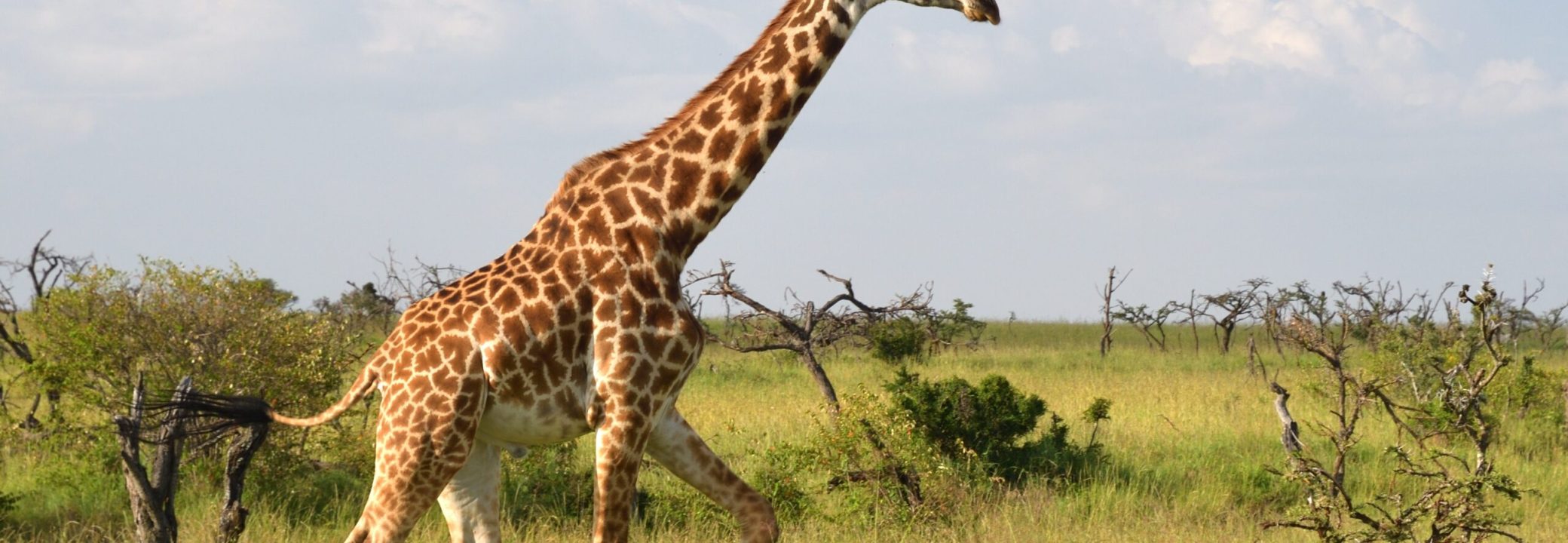
Arusha National Park
Rate : $420 to $3900
Best time : June to October
High season : July - August
- Overview
- History
- Why Visit
- best time to visit
- Things to do
- Better time to visit
- getting to
- Where to stay
Arusha national park is among the best parks in the north of Tanzania. The park is located a few kilometers northeast of Arusha. The main gate is just 25 km east of the city. Also, it is 58 km from Moshi and 35 km from Kilimanjaro International Airport (KIA).
The park is small and covers a total area of 137 km2 (53 sq. mi) with a few dangerous predators. Arusha National Park includes Mount Meru which is the second-highest mountain Tanzania stands at (4556m).
The park is scattered with an abundance of unique wildlife species such as the African elephant, Cape buffalo, hippo, zebra, giraffe, and even the wildebeest. Also, the park is home to amazing birdlife and is home to the famous migratory lesser flamingo.
The presence of alpine conditions on the lofty sides of the majestic Mt Meru only enhances the picturesque backdrop of this truly amazing national park.
The history of this park goes back to the year 1876 when Count Teleki, a Hungarian, visited the Lake Momella area. Back then the area has a vast number of hippopotamus and black rhinos. Unfortunately, those animals are now extinct in the area.
The area was used as a hunting ground until 1960 when Ngurdoto Crater National Park was established, and in 1967 mount Meru area also became part of the park. The name of the park was then changed to Arusha National Park. The name Arusha was derived from the region (Arusha city) park found.
outstanding Wildlife Diversity.
The different habitats that exist in Arusha national park, enhance its remarkably high level of diversity when it comes to wildlife species.
The park is famous for hosting a large number of Africa’s giraffe population. And also, visitors should expect to come across waterbucks, cape buffalo, elephants, blue monkeys, black and white colobus monkeys, turacos, trogons, Flamingos, and even very rare predators such as leopards in the right conditions. The park also claims an incredibly diverse variety of birdlife, making it a popular stop for bird lovers.

Presence of Mount Meru in the area.
The presence of Mount Meru in the area makes it the best spot for adventure lovers. Mount Meru is the second-highest mountain in the country after the great Kilimanjaro and the fourth-highest mountain in Africa.A
An active strata volcano, Meru has not exploded since 1910 and today stands silent watch over the safari capital of Tanzania, Arusha city.
Mt. Meru is a popular climbing destination for those who cannot take the 5-7 days needed to climb the highest Kilimanjaro and offers spectacular views of Arusha National Park, Arusha proper, and Kilimanjaro itself.

Ngurdoto Crater.
This is another beautiful crater found inside the Arusha National Park. It stretches 3 km in the area. It is a steep-sided bowl, surrounded by riverine forest, while the crater floor is a lavish swamp home to thousands of lesser flamingos.
The crater with its many visible animal paths, provides a natural sanctuary to many African animals, including African buffalo, elephants, a variety of monkeys, and baboons, as well as birds like hamerkop, spur-winged geese, and herons.

Fig Tree Arch.
It is a distinctive natural arch formed by a fig tree, this fascinating feature of the landscape has grown into an arch large enough for a car or an elephant to pass under it.

The best time to visit the park is during the dry season (late June to October). However, the Serengeti is visited throughout the year and some travellers prefer different durations as they can be best suited to match your interests. Here is a month-by-month guide to visit the Serengeti national park.
January to February.
- Beginning of Tanzania’s green season. Suitable for birdwatching.
- The famous Great wildebeest migration is concentrated in the Ndutu area and gives birth (calving season).
March
- This is a grey time, not clear if it will be dry or perhaps the rainy season will begin
- Almost the end of the wildebeest calving season
April to May
- It is expected to be rainy season therefore very difficult to move around or enjoying the sun
- Migration expected to be in south/central Serengeti
- Less travellers
June to August.
- This is the beginning of the dry season and the peak season for safari visitors.
- Great migration crossing Grumeti (west Serengeti) river in June
- Great Migration making its way north towards the Mara river for the dramatic river crossings into the Masai Mara reserve.
September to October
- Still dry season
- Travellers reduce
- The migration is expected to be in Maasai Mara Kenya
November to December
- Short rains
- Few travellers (small peak season from late December to early January)
- The migration is back, making its way to south Serengeti & north Ngorongoro
Trekking Meru Mountain.
Mt Meru stands at 4566m, it is Tanzania’s second-highest mountain and fourth in Africa. A Mount Kilimanjaro view while on top makes it among the spectacular volcanic cones in East Africa. Meru rewards climbers with dramatic hikes and adventure.
Horse ride across Arusha national park.
Arusha National park offers different forms of activities to make your African safari experience more memorable. The area is surrounded by amazing landscapes such as mountains, plains, forestry, waterfalls, and craters giving you a chance to explore and experience wildlife viewing from a different point, horseback.
Canoeing on Momella lakes.
In Arusha national park, you can enjoy the extraordinary experience of waterside game viewing. From the safe shallow waters of this beautiful soda lake, guests paddle silently along the shoreline in two-man canoes. Doing different activities in the African bushes is something else not to miss.
Bird watching.
The Arusha National Park and mostly Momella Lakes offer stunning bird-watching chances. The national park is populated by over 400 different migrant and resident bird species.
The most famous bird species in the Arusha National Park are waterfowls such as little grebes, eagles, pochards, geese, hamerkop, red sharks, spur-winged geese, woodpecker, herons, secretary birds, Flamingos, grey parrot.
Walking safaris.
It is true that the best way to experience the African wilderness is on foot. The park has some of the most remarkable scenery you can feast your eyes on.
The walk will take you across Mount Meru base and then to Momella Lakes present in the park. These are soda-lakes, shallow, and alkaline. The lakes are covered by algae with colors that are lovely to look at. North of the lake, you’ll see the sometimes blue, sometimes green hills that are around the lake. The Ngurdoto Crater is at a depth of 100 meters, its floor is swampy, and is surrounded by forests.
Game drive.
Arusha national park offers to view animals from moving vehicles. When choosing to book a drive-in safari a driver/guide will take you to Arusha national park in a 4×4 safari vehicle (and other places to visit depending on your itinerary) along the way.
In general, the driver/guide will also be your guide in Arusha national park and take you on the game drives through the park experience at their lodge.
Visiting Arusha National Park can be done throughout the year, but it is best from late June to October, which is the Dry season.
However, trips to the area can be customized according to the visitor’s interests. For example, June to October might be an ideal time for the big game viewing as most of the bushes are thinner and grasses are shorter and this gives a good game viewing. But April is the peak time for aquatic and migratory bird viewing as this is the wet
Arusha national park is among the famous parks in the northern circuit of Tanzania, there are two means of getting to Arusha national park. The first one is by road; the park is located just 45 minute drive from the main starting point of any safari in northern Tanzania.
There are a number of ways to arrive in Arusha town. The most recommended option to reach Arusha town is to fly to the Kilimanjaro International Airport (KIA) which is located approximately 46 kilometers or 29 miles from Arusha.
Also, another quick way of getting to Arusha national park is by flight. The presence of the airstrips in the park facilitates the landing and taking off for the visitors.
BUDGET.
(Public Campsites).
There are three campsites inside Arusha national park. The first one is located on the slopes of Mount Meru and is given the name public as it can be shared if there is more than one camper using it on the same day, whereas private campsites are exclusive for as long as the occupant is using it.
Regardless of being in the wild, they have running cold water, along with several modern facilities such as flushing toilets, a shower (cold water), and modern washbasins. All are housed inside a small brick house. Also, they do have a separate building that serves as the kitchen, and they are only equipped with sinks and counters.
Park authorities provide an armed ranger during the night for the park’s inhabitants. They can be a useful source of information on the campsite itself and the animals.
Just remember to keep your food safe at all times – lock the kitchen doors as it may attract unwanted attention from the animals and even be stolen.
MEDIUM AND LUXURY LODGES.
The park offers options of accommodations ranging from budget, and medium up to luxury ones. There are lodges found inside the area and some just outside the park.
Depending on your budget, plenty of places to stay are available in the area.
Suggested Arusha National Park Tours
Contact Us
- info@natureheartsafaris.com
- +255 692 691 900
- Arusha,Tanzania
Our Company
Recent Tours
Copyright © 2025, by Nature Heart Safari. All Rights Reserved
Copyright © 2025, by Nature Heart Safari. All Rights Reserved
Our Company
Contact Us
- info@natureheartsafaris.com
- +255 692 691 900
- Arusha, Tanzania


